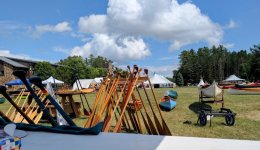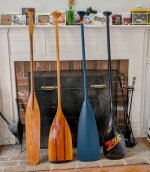I had to look up Serge Corbin to see that he is a marathon racer. I'm sure his race results wouldn't have been the same if he mainly used correction strokes. My gut feeling is that I go 10 to 15% faster by switching. I think the Canadians aversion to switching goes back to their reverance for Bill Mason.
I started out as a 100% correction stroke guy for my first 12 or 13 years but became almost 100% sit and switch, because it got me where I was going quicker. That lasted about 25 years when most of my paddling was done on trips and I was always pressed for time and pushing it. The last 7 or 8 years I've been doing more pleasure paddling and have reverted back to doing more correction strokes. Now I do a combination of switching and corrections. When I'm exclusively switching it is the wind that dictates when I switch sides, I almost always paddle on the downwind side of the boat.
I started out as a 100% correction stroke guy for my first 12 or 13 years but became almost 100% sit and switch, because it got me where I was going quicker. That lasted about 25 years when most of my paddling was done on trips and I was always pressed for time and pushing it. The last 7 or 8 years I've been doing more pleasure paddling and have reverted back to doing more correction strokes. Now I do a combination of switching and corrections. When I'm exclusively switching it is the wind that dictates when I switch sides, I almost always paddle on the downwind side of the boat.


